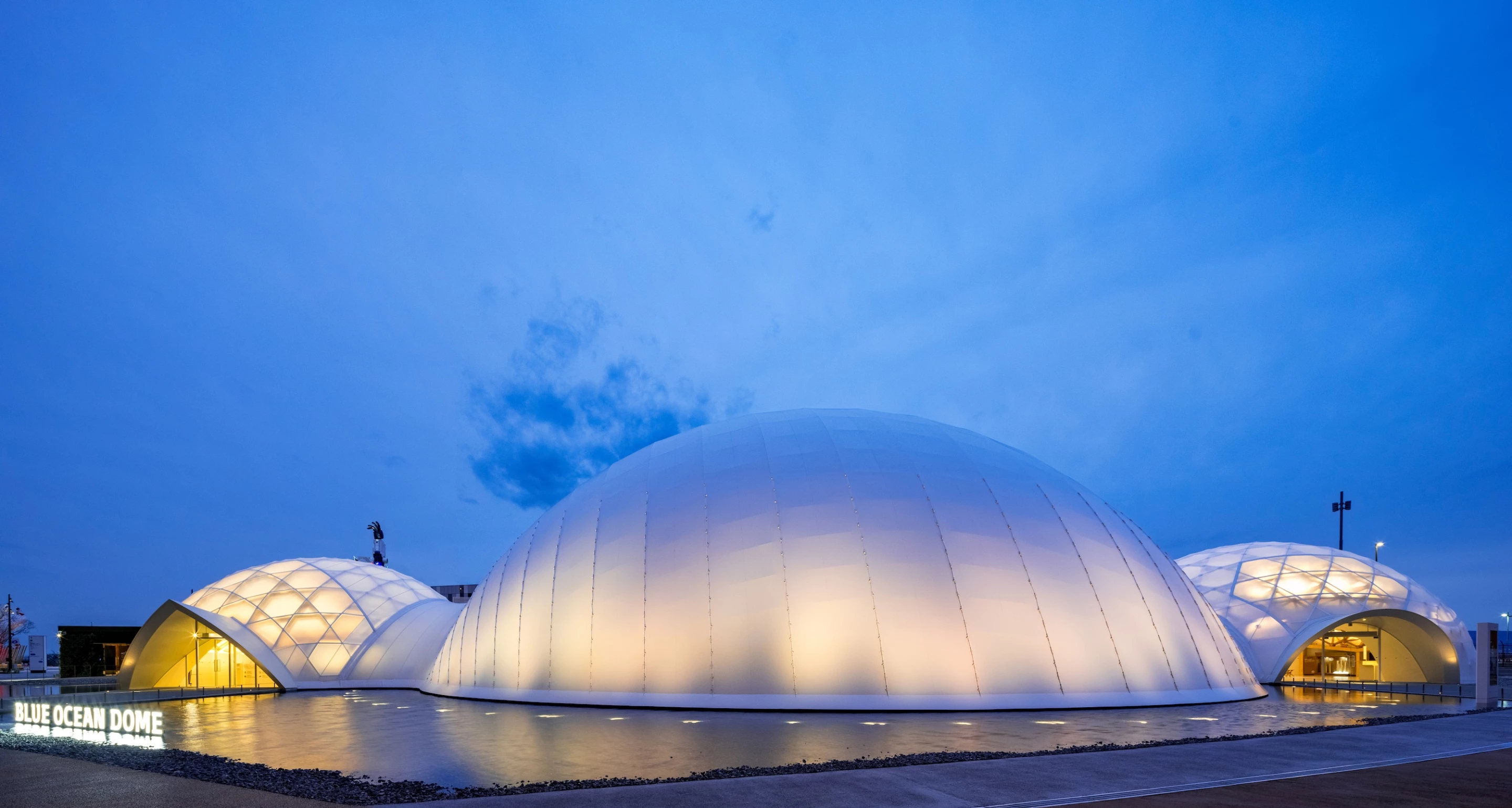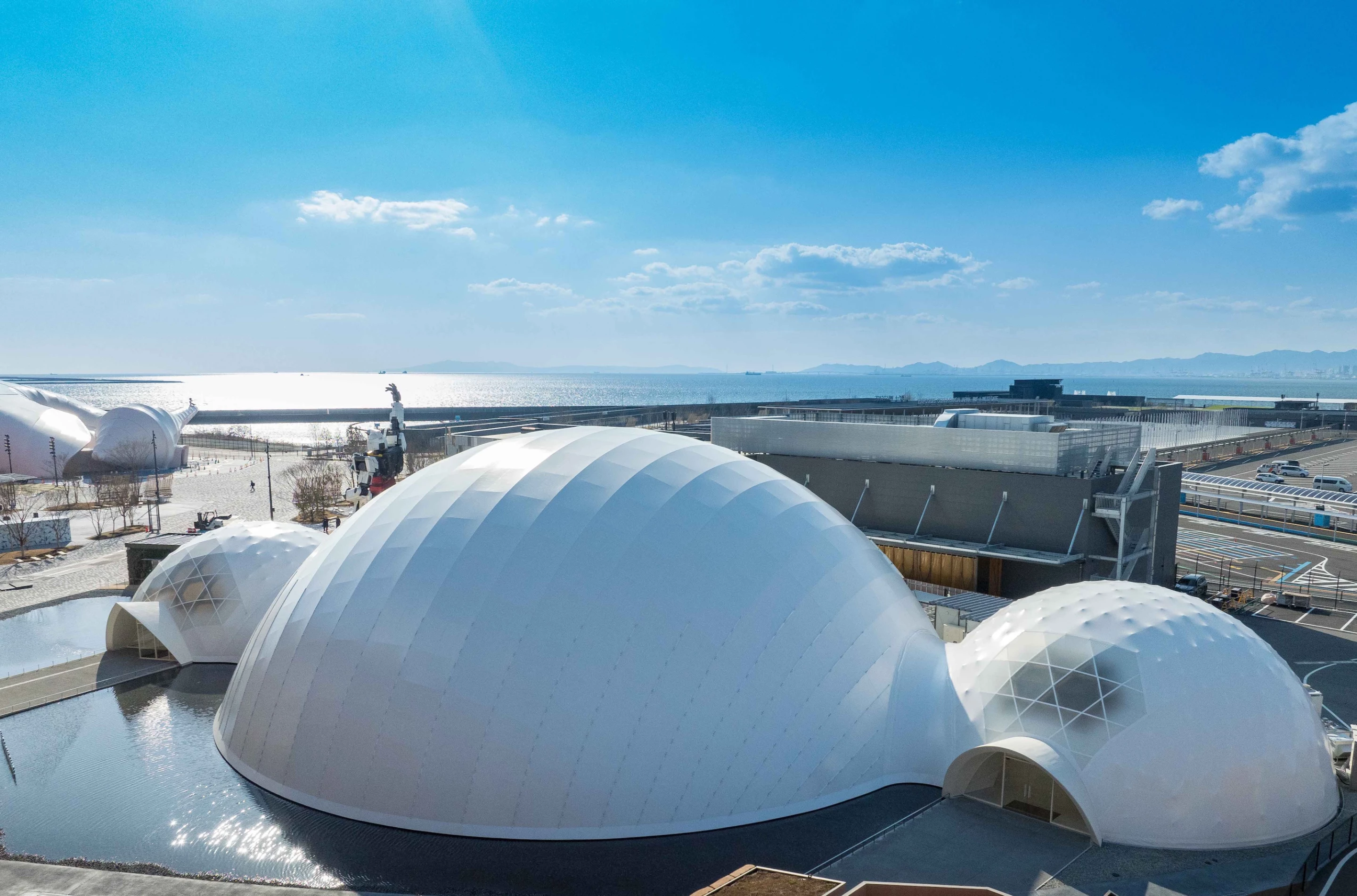It may be mostly used for packaging, but cardboard is a surprisingly capable building material in the right hands, as highlighted by Shigeru Ban Architects with its eye-catching Blue Ocean Dome. The eye-catching structure was created for Expo 2025 in Japan using a combination of cardboard, bamboo, and carbon fiber.
The temporary project was built for this year's World Expo in Osaka – which is taking place both within and next to the world's largest timber structure – and will be dismantled once the event comes to a close in October.
Each of the three domes is covered in a translucent plastic membrane to protect it from the elements and is supported by a framework made from a different material. The pavilion's entrance dome consists of a laminated bamboo structure, channeling people into the largest dome, which actually contains the majority of the exhibits, including an LED screen displaying videos.
This dome is made from a carbon fiber framework, chosen for its strength and, according to Dezeen, allowing it to be lightweight and installed without permanent foundations, so it doesn't disturb the ground. The third and final dome is the one that's mostly made from cardboard. This also has some more exhibits related to climate change and includes an exit.

The Blue Ocean Dome and was commissioned by a non-profit organization called Zero Emissions Research and Initiatives (ZERI) to showcase the state of the world's oceans and ongoing efforts to reduce pollution.
"Blue Ocean Dome is a pavilion where visitors can learn about the concept of environmental protection while having fun, based on the theme of sustainable use of marine resources and protection of marine ecosystems to realize the Osaka Blue Ocean Vision, which was announced at the 2019 G20 Osaka Summit and aims to reduce additional pollution caused by marine plastic waste to zero by 2050," explains the project's official Expo page. "At this ocean-themed pavilion, we will practice our efforts to conserve and promote awareness of the 'sustainable use of the ocean' and to realize the 'Blue Ocean Declaration.'"

Shigeru Ban Architects, which hails from Tokyo, but has offices in NYC and Paris, is passionate about working with cardboard. Some of its most notable works have involved housing people during natural disasters and war using the inexpensive material, as well as a cathedral built following New Zealand's Christchurch earthquake. However, the studio does of course work with other materials, and even undertakes occasional large-scale projects – including an upcoming housing development in Florida.
Sources: Shigeru Ban Architects, Expo 2025









